16 Types of Door Hinges That Meet Your Decorative Goals
Author: Rick Worst | Editor: Omar Alonso
Review & Research: Jen Worst & Chris Miller
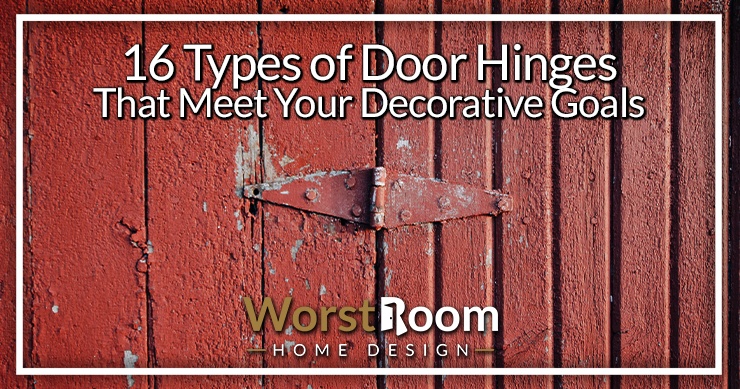
The hinge is an overlooked and under-appreciated hardware used in things that we use every day. All of the types of door hinges play a vital role, from the door you use to enter your home to the cabinet you open to get your medicine in the bathroom.
Door hinges are pieces of hardware constructed from metal used to attach the door to its frame. It might be hard to see how this little metal hinge keeps doors several hundred times their weight in its proper place if you look at it closely.
However, before we discuss the several different types of door hinges, you should be familiar with other parts making up the hinge.
The leaf or the wing is the flat part screwed into the frame and the door. In the middle of the two leaves is the knuckle, which allows the door's movement. Lastly, the pin secures the two leaves in place. Let's move forward to know more.
16 Types of Door Hinges
There are more styles and varieties of door hinges than you can think of. Down below, you will find the most popular ones and their proper applications so you can make an informed decision.
Ball-Bearing Door Hinge
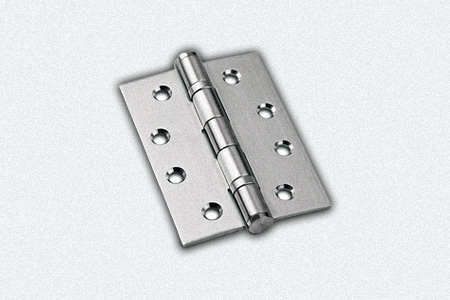
Door hinges wear down over time due to the nature of their use. Some types wear out quickly, while some function ideally even after thousands of uses.
The ball bearing hinge can outlast most other door hinges due to its heavy durability. There are lubricated bearings between the two knuckles, which essentially reduce friction and stress on the hinge.
Fewer friction results in a more durable hinge that operates smoother and quieter. Due to their nature, they are ideal for entry doors which tend to be heavier and frequently used.
Butt Door Hinge
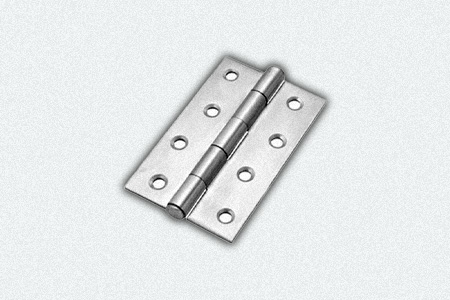
The butt hinge is the most widely used door hinge types among all the different door hinges available. From doors, both outdoor and indoor, to cabinets and closets, the butt hinge can be found.
Two leaf plates are anchored to the moving door and the frame. The two leaves are attached by a barrel, more commonly known as the knuckle. This facilitates the movement of the door.
When the doors are closed, the two leaves disappear, leaving only the barrel to be seen. A pin runs through the barrel securing all the components in place. They are designed to support some weighty doors, and they are fairly durable.
Case Door Hinge
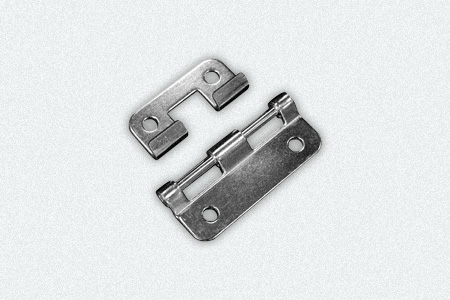
Case hinges are pretty similar to the popular butt hinge in their design and function. Two leaves are attached to the fixed frame and the edge of the door, which is then joined by a barrel.
They function identically to the butt hinge, but the case hinge has a decorative element that its counterpart lacks. Multiple shapes and sizes of case hinges that can give your home some style and elegance, making them ideal for entry doors.
Barrel Door Hinge
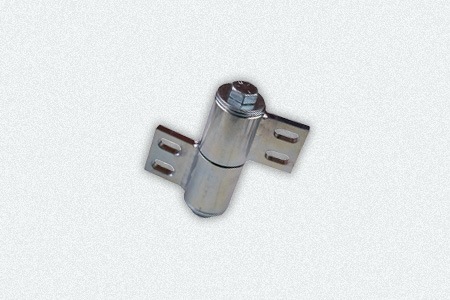
A hidden hinge barrel hinges are ideal for light-duty applications such as the types of cabinet hinges or small wood-related projects. Once implemented, they allow 180-degree movement of the door while concealing the barrel from view on either side.
These types of door hinges are usually made of brass making them weaker than other steel door hinges, so avoid using them for load-bearing applications. These are also called cylinder hinges and invisible hinges.
Spring Door Hinge
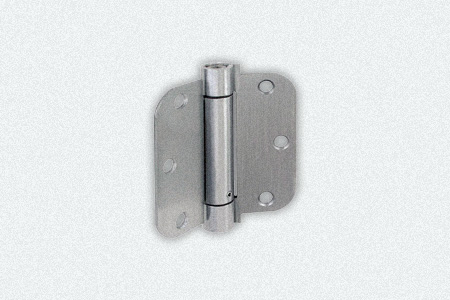
Another variation on the butt hinge, much of its construction is similar to the butt hinge. The leaf plates on the hinge are fitted with a spring that makes the door revert back to its closed position.
Spring hinges can self-close the door. Meaning, once you open the door, the hinge pulls the door back and shuts it. Due to its nature, its ideal use is in salons, kitchens, types of garage doors and other places where self-closing doors are necessary.
Flush Door Hinge
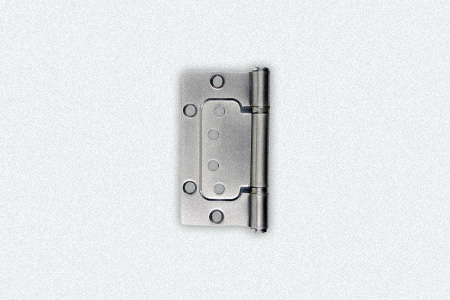
Flush hinges are another popular hinge type with an excellent design benefit. They are efficient with space and take up very little space. One of the two leaf plates nestles inside the other mounting plate via a cutout.
This design makes it so you only need one mortise to be cut in either the door frame or the door. Due to its space-saving nature will be suitable for lightweight doors such as cabinets and other similar projects.
Strap Door Hinge
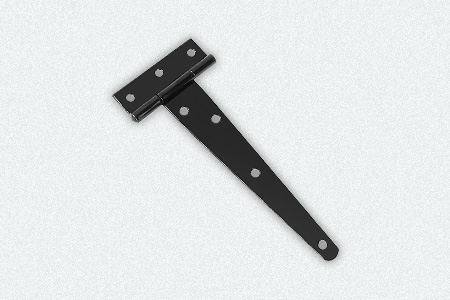
Strap hinges consist of 2 leaves; one leaf is attached to the fixed component or the frame, while the other is attached to the door's face on the side that pivots. The leaf is very long in size, and they have this unique look that cannot be found in other hinges.
Due to the length of the leaf that attaches to the door, the support provided is much stronger. Heavier doors can be used; therefore, they are ideal for your entrance, garages, or sheds.
Strap hinges are available in much or straightforward fancier designs to spruce up whatever is behind the door.
Pivot Door Hinge
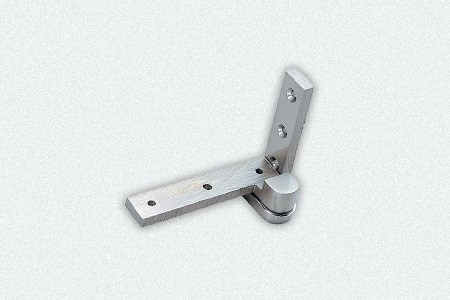
Pivot hinges are attached not to the sides of the doors like you would expect but to the top and bottom, flush with those surfaces. The other part of the pivot hinge then attaches to the door frame or even to the flooring.
The end result is very similar in that the door swings open as you would expect, except that you can fit these door hinge styles in tighter spaces, or even recess them into the door and frame so you have an extremely tight seal, visually.
The benefit of these types of door hinges is that they can manage heavier doors, which is useful in restaurants where waiters come in and out of the kitchen frequently. They're easy to open if you don't use a latch, where you can essentially just walk through them with the push of a hand.
Concealed Door Hinge
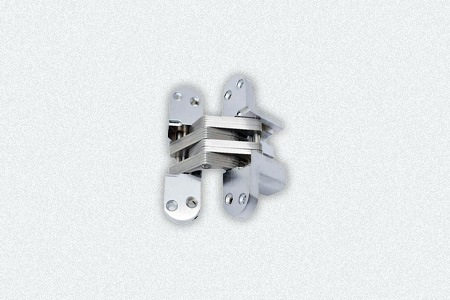
Concealed hinges are, also referred to as European hinges, have been around for a long time. The hinges are not visible at all once the door is closed. This gives a smooth and uninterrupted look to the door.
This type of hinge lets the design of the door stand out and shine. They can be made to be self-closing by making some minor adjustments.
Lastly, they are less prone to being tampered with as they are practically non-existent from the outside, making them much for secure. Their concealing nature makes them ideal for lighter doors and furniture with attractive designs, and even types of closet doors in master bedrooms, etc..
Knife Door Hinge
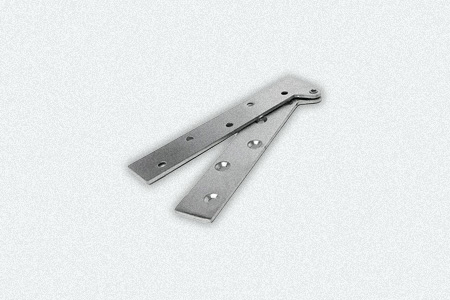
The knife hinge is mainly used in cabinets and gets its name from its resemblances to a pair of scissor blades. The two leaves are connected to a pivot point. One leaf attaches to the door while the other links to the cabinet.
Only the pivot will be visible once the hinge is installed. Due to their nature, you find them in cabinets with inset doors or overlays.
Toolboxes that have their door open upwards also use knife hinges. This facilitates the toolbox to open the door without detaching it from the box itself. These are different door hinges that can really be applied in a multitude of applications.
Olive Knuckle Hinge
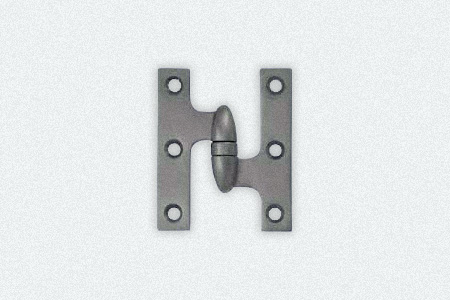
These elegant styles of door hinges have what is called an "olive knuckle" on them, which is the olive shaped piece that allows the door to swing while keeping the two braces connected. As is usually the case, the knuckle is visible when the door is closed, but only the knuckle.
People use these on cabinets and all types of swinging door installations as they not only largely invisible but the visible part can enhance the design of whateever you're working with. The design is interesting and results in a very durable hinge with nice rounded contours.
Overlay Door Hinge
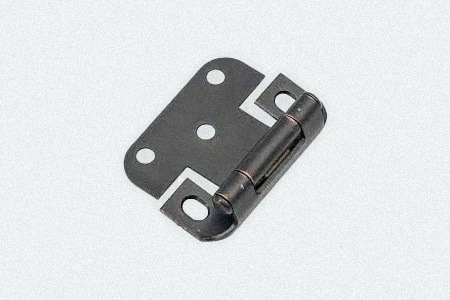
The overlay hinge functions just as it sounds. It allows the door to lay slightly or over the fixed frame. This is useful for a couple of reasons.
Firstly, if the current cabinet door does not fit inside the edge when it is closed, it is equipped with an overlay hinge that minimizes the thickness.
The foldable nature of these types of door hinges will not add any extra thickness that other hinges add when it is installed. Instead, they dictate how much the door lay on top of the frame saving precious inches. Additionally, they can be fully concealed or semi-concealed, depending on your preference.
Continuous / Piano Door Hinge
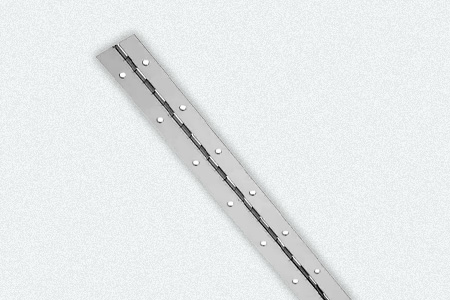
The piano hinge is, in fact, not only used in the piano lid but has a lot of other applications. The lengthy and continuous size means support is distributed throughout the entire door.
In addition, the leaf and central pin are usually the exact sizes as the door they are attached to, which alleviates some of the stress.
These door hinge styles can be mortised into the frame and door, making them invisible while closed or mounted on the surface. Due to their build, they are ideal for folding desks or workbenches, cabinet doors, and storage boxes.
Offset Door Hinge
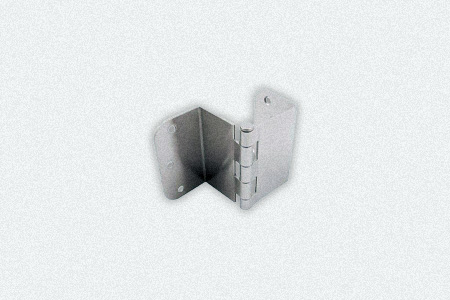
An offset hinge will allow you to widen the doorway it is installed quickly and without any hassle. The hinge swings away, moving the door farther away from the opening, which essentially increases the width of the passage by half to even two inches.
One to two inches might not seem like a big deal, but if you cannot seem to fit something big and heavy like a couch through a doorway, the offset hinge can be a lifesaver.
Heavy Duty Door Hinge
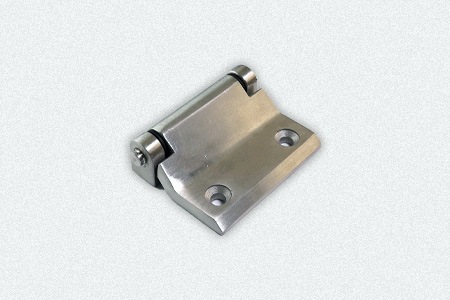
As the name suggests, these door hinge types are a heavier load-bearing version of your standard door hinges. They are much stronger than their regular counterparts and can be 1/4th on an inch thicker, making them more suited for heavier doors and furniture.
Butterfly Door Hinge
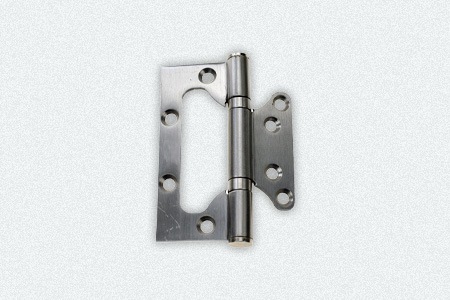
They are a variation of the more popular strap hinge. The leaf plates are designed and shaped like butterfly wings, adding a decorative element to the door. They are almost always surface mounted to show off the design and are usually made of brass.
They are ideal for cabinets, ornamental boxes, and all types of interior doors, which tend to be lighter and less frequently used than entrance doors.
Types of Door Hinges for the Space Allowed & Decorative Goals
Now more than ever, you are spoiled for choices with all the varieties of door hinges you can use. There is a door hinge for everyone, so we hope you can find yours. Try Lowe's hinge buying guide for more advice.
This brings our write-up about the different types of door hinges to a conclusion. Hinges are more than just a means to connect your door to its frame.



